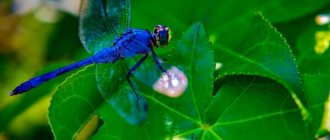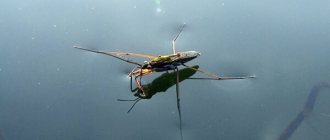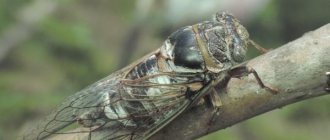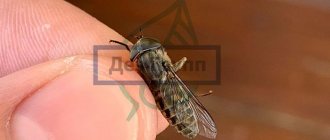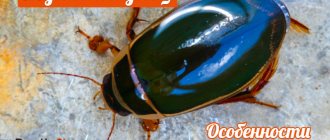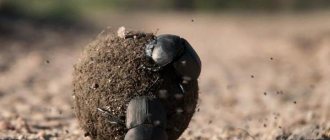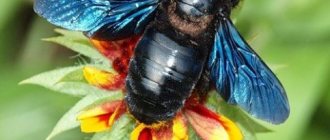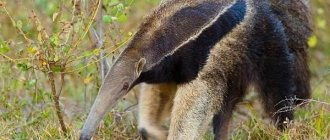Ants are insects that cannot live alone, but live in colonies of up to a million inhabitants. They are very self-organized. They belong to the order Hymenoptera. Promotes soil fertility. Many plants grow faster near anthills. They protect plants from pests. At the same time, the ant insect itself serves as food for many species of birds and animals. There are more than 14,000 different species of ants in our world. An ant can lift 20 times its own weight!
Family: Ants
Class: Insects
Order: Hymenoptera
Type: Arthropods
Kingdom: Animals
Domain: Eukaryotes
Where do they live?
These insects can be seen on all continents, in all climatic zones and regions. They are absent only in sultry deserts, on the cold islands of Iceland and Greenland, as well as in the harsh climate of Antarctica and the Arctic. In regions with cold and temperate climates, insects hibernate in winter.
As a rule, these insects build anthills for themselves in rotten or decayed wood, under small stones or in the ground. Certain species live close to humans or take over other people's nests.
External structure
Ants are insects that are considered one of the most famous and numerous in the world. Ant size and weight vary depending on the species. Body length can range from 1 to 50 mm. And more often than not, the largest ants are also the most dangerous in the world. Moreover, females are usually much larger than males. Body color depends on the species.
The anatomy of an ant is quite complex. The body of the murash is covered with a chitinous shell. This kind of skeleton not only supports, but also protects the baby. The description of the appearance of different representatives is almost similar. Head, chest and abdomen - this is the structure of the ant. A photo of the ant can be seen below.
Head
The head of an ant is usually large in size; for each individual species it differs in a certain structure. It has powerful mandibles. With them, workers carry food, blades of grass and twigs used for building nests. Mandibles also help insects defend themselves.
Eyes
Not everyone can answer the question of how many eyes an ant has. The insect's eyes have a complex faceted structure. In addition to the paired ones, there are 3 more ocelli. With them, tiny creatures determine the level of illumination and the plane of polarization of the light flux.
Mouth
The mouthparts of an ant are of the gnawing type. It includes the jaws, which are also called mandibles or mandibles, the upper lip (labrum) and the lower lip (labium). The mandibles can be large or not very large, excessively sharp or completely blunt. They are also overlapping and interlocking. Thanks to this feature of ants, mandibles can chew food even with their mouths closed.
- 34 facts about raccoons
- Maned wolf
- Nettle
- Elk
- 100 facts about bears
- Jungle animals
The organ of taste for goosebumps is the tongue located on the lower lip. Insects also use it to clean their bodies.
Mustache
The sensory organ of insects is the geniculate antennae. They help ants detect odors, detect vibrations and vibrations in the air. In addition, insects use this organ to receive and transmit signals during communication with their relatives.
Abdomen
The abdomen of ants is stalk-shaped (the stalk is formed by one or two rings). There may be a vertical growth or notches on it. Some varieties of ants have a sting at the end of their abdomen, which serves as a tool for hunting and their defense. Thanks to it, insects secrete acid - a special substance that paralyzes the enemy.
Paws
The ant has 3 pairs of well-developed legs, each of which is located on a separate thoracic segment and ends in a hooked claw. Thanks to this feature, the ant’s movements can occur not only on horizontal, but also on vertical surfaces. A close-up photo of the ant is shown below.
The method of their movement depends on the structural features of the insects' paws. Not all ants move on foot; some species have the ability to jump. There are also gliding insects and runner ants, red fire ants are able to form bridges over water barriers.
The ant's legs serve more than just movement. So, with its front legs, equipped with special brushes, the insect takes care of its antennae. Spurs located on the hind legs are used for attack and defense. And the presence of small serrations on all legs allows insects to move even along steep, smooth surfaces. An example of this is pharaoh ants, which can run quickly on glass.
Description
In nature there are yellow, red, black, red ants, and many of them are not monochromatic, and combine these colors in their coloring.
Speaking about the ant, it should be borne in mind that depending on the species, its size can range from 1 to 50 mm and even more.
Red ants from the genus Mohomorium are considered the smallest: the length of working individuals is 1-2 mm, females and males - from 23 to 4 mm. As for the largest representatives, for example, African males of Dorylus can reach 3 cm, and the uterus during the maturation of eggs, due to a greatly enlarged abdomen, reaches five centimeters.
Despite the fact that ants' vision is poorly developed (and some are completely blind), they distinguish vibrations and movement very well. Their vision is successfully replaced by antennae located on the head, which detect chemicals, sense the movement of air masses, and, in addition, with their help, insects transmit and receive signals through touch.
The upper jaws (mandibles) of ants are so strong that they successfully use them to carry food, manipulate various objects, build an anthill and successfully defend themselves. Interestingly, in some species these jaws open 270° and snap shut like traps at speeds of up to 230 km/h.
Internal structure
The internal organs of the ant, which are located in the abdomen, are also unique in their own way. So the esophagus ends not with the stomach, but with the so-called goiter. Insects use it to collect food. If it is necessary to treat its relative, the ant regurgitates some of the food from this cache. This is especially true for honey ants, which are also called barrel ants.
Nervous system
The insect nervous system includes several interconnected ganglia. Thus, the suprapharyngeal ganglion, which acts as a brain, is responsible for the thinking and behavior of insects. It is much larger in relation to the body. The working ant has a particularly large brain; in females it is slightly smaller, and in males it is the smallest.
Circulatory system
The blood of ants is a clear liquid - hemolymph. It is driven throughout the body by the spinal vessel – the heart. It is a muscular tube that runs along the entire back.
Respiratory system
Respiratory system of tracheal type. The trachea opens outward through stigmas (spiracles), which are located on each abdominal segment (on a stalk at the base of the scale).
Ants are strong!
As is known, ants are capable of carrying loads that are several times greater than their own weight. The secret here is that the ant's muscle strength does not decrease in direct proportion to its size. We believe: with a decrease in the size of an insect’s body, its mass decreases in proportion to the third power of the length of its body, and the cross-sectional area of the muscles, which determines the absolute strength, decreases and corresponds to the square of the length of its body, which means to a lesser extent than its mass. With the help of this fact, small ants can transport large loads on themselves. However, following the same calculations, if you theoretically increase an ant to the size of an elephant, it will no longer be able to carry the same mass as it can carry with its small size.
Types of ants
Today, about 13,000 species of ants have been studied and described, of which about 300 live in Russia. These insects are difficult to classify. This is due to the fact that there are twin species and numerous hybrids, which are difficult to distinguish by appearance.
The following types of ants can be considered the most interesting:
- The black garden ant ( black lasius ) (lat. Lasius niger) is the most common species of ant, representatives of which are found in abundance in Portugal and Great Britain, in central Russia and in the Far Eastern region, up to Ulaanbaatar. Working individuals have a body length of up to 4.5 mm, males grow up to 5.5 mm, females - from 7.5 to 11 mm. The black or dark brown body of the garden ant is covered with frequent short hairs. Black ants make nests in the ground, under stones and in rotten wood. The main food of the ant is sweet honeydew secreted by aphids; therefore, insects cause serious damage to agricultural land by breeding and protecting the main source of food, aphids. The species is distinguished by the record life expectancy of the uterus, which reaches almost 30 years.
- Red myrmica (lat. Myrmica rubra) is a species of ant common in Europe, the Urals, Siberia and the Far East. Reddish females grow up to 6 mm in length, male ants are black, up to 5 mm long. Red ants build their homes in the ground, under stones and fallen trees.
- The small forest ant (forest bareback ant ) (lat. Formica polyctena) lives in the forests of the temperate climate zone throughout Northern Eurasia - from Spain, Belgium and Germany to Russia, Finland and Sweden. Forest ants have a body length from 7 to 14 mm, a red-brown color, red cheeks and a black abdomen. The anthill of forest ants is up to 2 meters high and consists of branches and needles. This species of ants has endangered status and is listed in the Red Books of many European countries, and in some regions it is classified as rare animals.
- Pharaonic ant (house, ship ) (lat. Monomorium pharaonis) originally from Egypt, gradually settled across all five continents. Working individuals are yellow, have no wings and grow no more than 2 mm in length. Male ants are winged, almost black, with a body length of 3-3.5 mm. The females are yellow-brown in color, up to 4.5 mm long, initially winged, but after mating the worker ants bite off their wings. Pharaoh ants live in dark, damp places, building anthills within the same residential building in the walls, foundation, behind baseboards, interior trim and even in wardrobes and household appliances.
- Dinoponera gigantea ( lat. Dinoponera gigantea) is the largest ant in the world, it grows up to 33 mm in length and has a black body color. The giant ant lives exclusively in the humid forests and savannas of South America, where it is called the Giant Amazon or Dinosaur ant. A distinctive feature of the species is winged males and the complete absence of queens. Their role is played by working individuals capable of fertilization - females. The dwellings of giant ants are located underground, at a depth of up to 40 cm, and can accommodate the entire small family, consisting of 20-30 individuals.
- The Asian tailor ant (lat. Oecophylla smaragdina) is found in tropical and subtropical zones in Australia, Vietnam, Thailand, Bangladesh and South India. Representatives of this species of ants are bright green with beige limbs and a red-orange abdomen. The length of working individuals does not exceed 8 mm, males grow up to 10 mm, queens up to 13 mm. Asian tailor ants make their homes in trees, fastening the foliage with the cobweb secretions of their larvae, which is why they received the name “tailor ants.” A colony containing up to half a million individuals can be located on a dozen trees at once. Ant larvae and pupae are used as food for poultry, in traditional and folk medicine, as well as in the national cuisine of India and Thailand.
- Eastern liometopum (lat. Liometopum orientale) is an inhabitant of the Far Eastern region of Russia, listed in the Red Book as an endangered species. Working individuals of dark brown ants reach a length of 4-6 mm. Males and females are completely black and have a body length of 10 and 12 mm, respectively. Liometopum makes nests in the wood of Korean pine, fir, Mongolian oak, linden and birch.
- The blood-red ant (slave owner) (lat. Formica sanguinea) is widespread in Europe, central Russia, and is found in China and Mongolia. Working individuals are up to 8 mm long and have a black body with an orange head. The queen ant grows up to 10 mm and is distinguished by a red head and orange chest. Ants make summer nests in half-rotten stumps, in the ground and under stones; in winter, the family moves to another nest located at the base of trees. The typical way of life of this type of ant is predatory raids on the anthills of brown forest, quick and other ants. Captured pupae are brought to the nest and raised as "slaves".
- The yellow Amazon ant (lat. Polyergus rufescens) is a species of ant distinguished by its rather large size: females reach almost a centimeter in length, males are somewhat more modest in size - 6-7.5 mm, “soldiers” are even smaller and rarely grow more than 5-7 mm . Females and “soldiers” are colored yellow-reddish, the body is usually covered with black hairs. Male ants are black, with brown limbs and antennae. The species lives in European countries, in the western regions of Asia, in western Siberia. The Amazon ant prefers to settle in damp forests, choosing clearings and forest edges to build an anthill. Amazons lead a slave-owning lifestyle, kidnapping other ants in the pupal stage, and then using them as slaves and labor.
- Legionnaire ants or nomadic ants (dorilins, wandering ants) (lat. Dorylinae) are a subfamily of nomadic ants that live exclusively in the tropics and subtropical zones. Legionnaire ants are especially common in Central and South America and are found in Africa. They live in huge colonies, the main part of which are working individuals. Nomadic ants destroy everything in their path that is suitable for food. Despite the average size of 2-4 mm, this type of ant “takes over” with its numbers, destroying crops of cultivated plants during invasions and feeding on their juices.
The most incredible ants
The most famous in Russia is the red forest ant. It is their two-meter anthills that can be found in coniferous forests. Several hundred thousand red ants live in such dwellings in an organized manner. These are real forest orderlies. Redheads feed on secretions of aphids, larvae and adult forest pests. According to scientists, in one day, more than 20 thousand different caterpillars and pest larvae are eaten in such a huge anthill. One such anthill can protect a hectare of coniferous forest; the role of ants in nature is enormous.
Pharaoh ants are the most tenacious, they are almost impossible to breed, since these individuals create a huge number of dispersed nests.
Each nest contains several hundred worker ants and several females. All nests are interconnected. Such a colony can be located on several floors of a multi-story building. In order to get rid of them, you need to simultaneously find and remove all the nests, which is almost impossible to do. But they also have benefits. There are no bedbugs in an apartment where ants live; they cannot tolerate the formic acid mixture.
Australia is home to the most primitive and largest ants, which are very similar to wasps. They are called bulldog ants. The name will become clear if you look at what an ant looks like: they just have huge jaws that help them get food and, oddly enough, jump. They push off the ground with their jaws and jump to a 30-centimeter distance. Bulldog ants are also unique in that they can swim and are dangerous to people. They have a sting; when bitten, the poison enters the bloodstream and causes anaphylactic shock.
Amazon ants are the most specific. This species does not give birth to workers. All offspring consist of soldiers and future queens. They attack other nests, stealing their larvae and pupae. It is these worker ants that subsequently do all the work.
Leaf-cutter ants are the most skilled agricultural workers. They bite off a piece of leaf, drag it to the nest, where other individuals chew it. The resulting mass is infected with fungal spores. Subsequently, the mycelium is the food of the ants. Interestingly, the saliva of individuals contains antibiotics, which prevents the mycelium from disappearing.
Mafia ants are surprising in that there is only one alpha male in their colony. He protects the anthill from strangers by releasing an odorous liquid and worker ants from his anus, like soldiers running to the rescue. The alpha male destroys future males at the pupal stage, considering them to be aggressors.
Fire ants have the most powerful sting and poison, the effect of which is equivalent to a burn. There are cases in history when people died from fire ant bites.
Guest ants are shiny touch-me-nots. They don't know how to do anything except parasitize. They have the most unusual appearance - their paws grow directly from their eyes.
Child killer ants are the most bloodthirsty. They steal the larvae and then eat them alive. It is difficult for other individuals to catch them, because baby killer ants spread pheromones around themselves with a terrible odor. This allows them to safely leave with their prey.
Punisher ants have only one queen - the female. She is surrounded by five “maids of honor”. All of them are ready to take the place of the queen. If one of them breaks the rules and lays eggs, there will be no mercy. Either she dies or she will be demoted to the status of a worker bee.
The bullet ant lives in an anthill on a tree. The sting of his sting is very painful. The pain is equivalent to the pain of a bullet.
Crazy ants exterminate very dangerous poisonous fire ants. It is rare that an insect can survive such poison. Crazy ants coat their bodies with their own toxin, thus neutralizing someone else's poison. You can read the article “What do different types of bedbugs look like and what do they eat?”
Lifestyle
An ant family is formed over many years, as a result of which the number of inhabited anthills can be several million (these are already colonies located near each other over vast territories). Ant society is divided into three castes: females, males and workers. Taking into account the class, a division of labor occurs, and everyone from the queen to the worker must perform their functions at the proper level (if they fail to cope with their duties, the queen is removed and the worker is killed).
It is not difficult to distinguish representatives of the three castes by external characteristics: while females and males have wings, workers (females with an underdeveloped reproductive system) do not. True, after fertilization, the queen’s wings usually either fall off, or she chews them off for herself, but even in this case, she can be distinguished by her enormous size. While queens and workers emerge primarily from fertilized eggs, which contain the two sets of chromosomes they received from the egg and sperm, males emerge from unfertilized ones. Before turning into an adult, the red, red, black ant goes through the stages of egg, larva and pupa.
These hardworking insects
Black, red, red ants belong to a family of insects that belongs to the superfamily Antidae from the order Hymenoptera, which also includes wasps, bees, ichneumon wasps, sawflies and gall moths. In total, there are more than 13 thousand species of ants, most of which live in tropical latitudes (for comparison: 1,150 species live in the Palearctic, about three hundred in Russia).
The number of this family, according to various sources, ranges from 10 to 25% of the biomass of all terrestrial creatures. True, their weight is extremely small. For example, in the Amazon forests there are 800 million ants per square kilometer, while in total all forest ants weigh half as much as the rest of the inhabitants of the area.
Red, black and red ants are distributed throughout the world. It is worth noting that not only forest and garden ants, but also ants in the house are a common occurrence. They are not found except in cold Antarctica and several islands located far from the continent.
Interesting facts about raccoons91614.714
Insects build anthills wherever they can, using mainly soil and plants for construction. Their nests can be seen everywhere: on the ground, under stones, in logs, underground; if they happen to settle in a house, they can build an anthill there too. An anthill should never be built in areas with dead insects, as this indicates the presence of disease or other danger.
Such good adaptability is largely due to excellent social organization, the ability to use various resources and maneuverability in their life: if necessary, they will easily change their place of residence.
Hierarchy
Uterus
One nest can contain from one to several females capable of producing offspring (queen). These individuals are externally distinguished by their larger size and have wings before fertilization. The female mates only once in her entire life, taking off after the male when a certain moment approaches (this process is called mating flight). There are species that mate with only one male, and others with several dozen.
As a result, the uterus receives a supply of sperm in an amount that it consumes throughout its life, and it lives from twelve to twenty years. After fertilization, the queen either leaves and forms her own family, or remains in the old anthill. If she leaves, she must find a new place for the nest, create the first “room”, and some time later begin to lay eggs in it.
At the same time, in some species, the queen, in anticipation of the first offspring, leaves the anthill in search of food, in others, she sits incessantly on eggs and larvae, maintaining her existence with the help of fat reserves. The queen feeds the larvae with “food” eggs or with the help of the salivary secretion she secretes. Due to the fact that no one helps her look after the first cubs, the first individuals turn out to be very small, one might even say dwarf.
It will be interesting to know about the queen ant that, contrary to popular belief, she is not the center of the family: the more queens in the nest, the less respectful they are treated. For example, they can give it to another anthill where there is no queen, and even kill it if fertility has decreased, after raising a new queen.
Males
Almost all males, with a few exceptions, emerge from unfertilized eggs, and therefore are carriers of only one set of chromosomes, the maternal one. Almost all of them have wings, and they fight so fiercely among themselves for young females that they often die. In fact, their entire role is reduced to fertilizing young queens, so after mating they die.
Workers
The overwhelming number of individuals are workers, females with an underdeveloped reproductive system, whose main task is to take care of the family living in the anthill. They do not have wings, they are not as large as females, they have smaller eyes, and in some species they are completely absent. The roles between workers are distributed largely depending on the characteristics of their body:
- Soldiers are large workers with disproportionately large heads and strong jaws (mandibles) that they can use effectively during combat. While there is no fighting, they perform the same functions as other working red or black ants;
- Nurses, as a rule, are young insects who look after the larvae, who tell them whether a red or black ant of what social status will appear. If necessary, they destroy excess female larvae (this is done to control the number of individuals capable of creating offspring) or change their feeding regime, creating a working individual;
- Foragers - scour in search of food and, having found it, inform the rest of the ants, laying marks to the nest using pheromones.
Among the ants there are builders (monitor the condition of the nest, dig tunnels, repair it), cleaners (clean the anthill and carry dead insects beyond its boundaries), honey barrels (keep reserves of liquid carbohydrate food), shepherds (graze livestock on the leaves, whose role is played by aphids) and representatives of other “professions”.
If it turns out that a worker is not engaged in his duties and copes poorly with them, he changes his profession, for example, a forager turns into a nanny. Insects and old ants do not abandon in trouble: they become watchmen, food keepers or observers. An equally interesting fact is that they care for the wounded and dying: they bring them food, for example, feed them the juice that aphids secrete until they are able to consume it.
Where did the ants come from?
To date, about 12,000 species of ants have been described, but scientists know nothing about the biology of most of these species. So where did ants come from? These insects are believed to have evolved from wasps. Ants are social insects and this feature distinguishes them from them. Community appeared in ants about 130 million years ago, when they evolved from a closely related non-social insect. But some species still retain features that make them similar to their ancestors. For example, Australian bulldog ants have a wasp sting, which makes them very similar to wasps. Their worker ants are not inferior in size to the queen and even retain the ability to lay eggs. True, their eggs go to feed the larvae, since only the queen is entrusted with the production of a new generation. This is not the only difference between bulldog ants and other species. Their ant community is formed somewhat differently. They have no division into castes. When the queen mother dies, several female worker ants, capable of fertilization, claim her place. The winner is determined at a "knight's tournament". The ants stand in front of each other and menacingly move their jaws and antennae from side to side. But fights, even ritual ones, are rare in the ant family. Usually insects work peacefully for the benefit of the entire anthill. Another species of large tropical ants is also known, which are in many ways similar to their relatives, wasps. This is the "bullet ant" (Paraponera clavata). The worker ant of this species is also female, has a sting and strong poison. Its body, like that of all ants, consists of three segments enclosed in an exoskeleton. Large and powerful mandibles are used for lifting weights. The secret of ant communication lies in scent glands that secrete pheromone, and antennae with nerve cells tuned to smell and touch. The perfect toolkit for any community insect. But the bullet ant does not go as far in its social life as other species. Their colonies are small in number, and each worker is an independent hunter. Being 2.5 cm long, the bullet ant hunts alone, so part of the success of this species depends on individuals.
What do they eat?
The food is varied and will depend on the species. The daily menu of many species consists of animal and plant foods, with each individual eating several times a day.
- The basis of the carbohydrate diet is honeydew and honeydew, the sweet secretions of insects, especially aphids. Ants grow aphids for themselves, graze them, and protect them from other ants.
- The source of protein is the remains of animals, dead insects, trophic eggs that the queen lays during an overabundance of food, semi-digested food of adult ants and eggs of pests. Larvae of domestic insects are content with the remains of egg dishes, gelatin and dairy products. The queen's diet also consists of protein products, which are chewed by the ants specially caring for her.
- In winter, insects hibernate, during which they starve. At the same time, many species lead an active lifestyle in a sealed anthill in winter, feeding on various reserves.
- Harvester ants consume grain crops, dry fruits and dry plant seeds. They can store a kilogram of raw materials, this allows them to feed an entire colony in winter. Leaf-cutter ants bring pieces of leaves to the anthill, chew them and leave them for storage in greenhouse chambers. After a while, mushrooms grow from these pieces in storage, which are the main food. Centromyrmex ants eat only termites. The Dracula ant consumes the juice that the larvae secrete, and the larvae feed on insects. House ants are completely omnivorous.
- Additional food components may include tree sap, nuts, roots and seeds of plants.
Nutrition
It can be said about ants that almost all of them are predators, scavengers, and also feed on plant foods (adults eat carbohydrate foods, larvae eat protein foods). They find food not only on the ground, but also an ant on a tree in search of food is a common occurrence. For protein food, they eat invertebrates, mainly insects: they pick up corpses, hunt and even raise livestock (aphids).
They get carbohydrate food from honeydew: it is given to them in abundance by their cattle and aphids (except that aphids secrete a special liquid, which red, red and black ants eat with pleasure, and the aphids themselves act as meat). They also feed on seeds, plant sap, nectar, and mushrooms (they often grow the mushrooms they need on their own).
They take all the prey to the anthill, where they distribute it among themselves (they never eat on the side). There are species that have a process in the esophagus, nicknamed the “social stomach”: in it, insects store food during transportation, and, having delivered it to the place, remove it, and then distribute it among the ants.
Reproduction
All reproduction is carried out in several ways and occurs twice annually.
- During the first method, the queen with a certain number of workers separates from the society and creates a new anthill.
- Another option is a mating flight, in which a female from a foreign anthill is fertilized by several males. Then she lays eggs, from which worker ants are born. Males die after a certain time. Until the workers emerge, the female feeds on the remains of the wing muscles. Females and worker ants are born from fertilized eggs, and males from unfertilized eggs.
These insects are completely harmless, of course, when they do not look after human housing for their place of residence. Therefore, there is no need to simply exterminate them: after all, the ant is an important link in the ecological chain.
Interesting facts from the life of ants
Did you know that:
- the amount of intelligence (learning) in ants reduces their lifespan and fertility
- a worker ant has a brain (mushroom bodies) almost twice as large as a soldier's
- Of the total number, only 3% of ants constantly work in anthills; 25% of individuals have never been seen at work. And 72% of insects either work or don’t work, about half the time
- Scout ants are the intellectual elite of the anthill; they transmit encoded texts of the movement route to each working individual and make up about 1% of the entire population of the anthill
- “Circles of death” in legionnaire ants occur due to a failure of orientation on the terrain; they begin to move one after another at the level of pheromones and twist into a spiral. The weakest die in the center of this circle
- The collection of milk (honeydew) from aphids is carried out by a special caste - shepherds. With their paws they tickle aphids, getting them to secrete droplets of honeydew and pass them on to workers for transportation.
- some species (leaf cutters) have divisions of workers (subcastes): some (small in size) work only inside the anthill, never leaving it. And others (large sizes) are only outside, ensuring the cutting and delivery of leaves.
Ant protection
Aneuretus simoni
Although most ant species are resistant to many attempts by humans to eradicate them, some species are at risk of decline or extinction. These are mostly island species that have evolved specialized traits, including Aneuretus simoni from Sri Lanka and Adetomyrma from Madagascar. There are 149 ant species listed on the IUCN Red List of Threatened Species. The eastern liometopum is included in the Red Book of Russia (category 2, a declining species).
By 2009, in 15 constituent entities of the Russian Federation, 30 species of ants were included in the regional Red Data Books (or in the relevant regulations on the protection of rare and endangered species of organisms). In some European countries, the nests of red wood ants are protected and settled. Since 1971, the All-Russian Operation Ant was carried out in the RSFSR to map, protect and resettle beneficial species of forest ants of the genus Formica. In Russia, the destruction (ruin) of anthills is an administrative offense, for which a fine of 300 to 500 rubles or a warning is provided.
Eating
Ants and their larvae are edible and consumed in various parts of the world. The “eggs” (pupae, larvae) of two species of ants from the genus Liometopum serve as the basis for the preparation of a dish known in Mexico as “escamoles”. They are regarded as a form of caviar (or insect eggs) and are sold at a high price, approximately $90 per kg, due to the fact that they are a seasonal and difficult-to-discover resource. In South America (in the Santander department of Colombia), large-bodied ants, known locally as “hormigas culonas” (leaf-cutter ants of the species Atta laevigata), are collected, which are fried alive and eaten.
In various parts of South (India) and Southeast Asia (Myanmar, Thailand), green weaver ant paste is used as a seasoning for vegetable (or meat) curry. Eggs and larvae of weaver ants, as well as their adults, are used in the preparation of Thai yum salad, in a dish called yum khai mod daeng or red ant egg salad (a dish originating from the Isan region in the north). eastern Thailand). Weaver ants are also used as food by the aborigines of Australia (North Queensland). Mexican Indians eat worker ants known as "honey barrels."
The role of ants in nature
useless living creatures in nature . None at all. Ants bring benefits than many of the larger animals. Part of this enormous benefit can be realized due to the fact that the density of ants is approximately 17-20% of the total mass of all insects on our planet. So, here are the main benefits of six-legged insects for the forest .
- Orderlies. Anthills are “based” in fallen leaves and tree bark. The activity of insects greatly accelerates the decomposition process, which reduces the number of harmful bacteria and small parasites that can cause harm to other forest inhabitants.
- Once again, orderlies . Ants are predators . Violent and omnivorous. A large colony of insects can kill a bird of decent size. By destroying small pests, ants make it possible for a large number of plants to develop, and at the same time make the existence of larger living creatures easier. Interestingly, ants destroy about 20 times more other insects than birds!
- Pollinators. Hard workers do not disdain plant seeds. But on the way to the anthill, some of them are lost. As a result, new plants grow along the ants' routes. In terms of efficiency, they, of course, cannot compare with bees, but they perform their role well.
- Leavening agents. An anthill is a collection of a huge number of tunnels underground. The loosening of the soil reaches such proportions that even some exotic plants can grow in the area of the ant’s home.
- A source of vitamins or “natural medicine” in action . Although ants are predators, they often become prey themselves, mostly of birds. These insects are so nutritious that the average bird could, in theory, eat only them. In addition, formic acid acts as a septic tank. By pushing ants under their feathers, birds get rid of parasites.
Now do you understand why the destruction of anthills is prohibited by law ? If there are suddenly no more ants, or at least their concentration decreases, then the world will never be the same.
Video
The benefits and harms of ants
The benefits and harm from insects depend on how large their family is and where they live: on a personal plot or in a forest. Garden ants contribute to the enrichment of the soil with oxygen, as they dig their tunnels in the upper layers of the soil.
Humus and remains of organic waste carried by ants into their homes decompose over time, saturating the soil with minerals and making it more fertile. Insects are also plant pollinators: while obtaining nectar for food, they transfer pollen on their abdomens.
Unfortunately, ants contribute to the proliferation of aphids, since they feed on the products of their vital activity, therefore, where there are many of these insects, aphids also live freely, causing enormous damage to the crop.
At the same time, they are capable of exterminating caterpillars and some types of butterfly pests. If ants appear in a human home, they not only cause discomfort, but also eat food, spreading infections and causing allergic reactions.
Forest ants protect trees from parasites, destroying huge populations of them. In addition, by collecting the secretions of certain insects, they protect plants from fungal diseases. But the woodborer is capable of destroying a healthy tree in just a few weeks, making tunnels in its trunk.
This species is also dangerous for garden furniture made of solid wood, since neither paint coating nor pungent-smelling products for treating wood products can scare them away.
Ants secrete a special secretion called formic acid; it is widely used in medicine and pharmacology, and is included in antiseptics, drugs to combat the development of diabetes, arthritis, etc.
If the acid enters the human body in its pure form, it can cause severe anaphylactic shock, which, without timely administration of antihistamines, leads to death.
